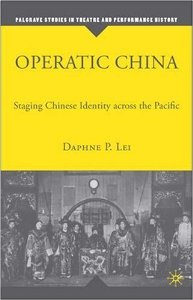Performative
/Let's talk about the power of words. Words can become stand-ins for whole ideas, even whole histories, which makes certain words really powerful. But strangely these power-words have a half-life, a point at which they lose any actual meaning. At that point they become simply markers of identity or tribe, if they maintain power it is the power to exclude or ridicule.
Here are some easy examples: sustainable, capitalism, embodiment, spiritual, relax. Feel free to add your own examples in the comments and to devise poems out of them.
After a word has journeyed to meaninglessness it can sometimes be reclaimed. 'Elightenment' is a good example of this. The word got so over used that it hit the point of self-parody. But I discovered that if I started using it to mean something real, immediate, present and available, people had to stop and try to figure out what I was talking about. Suddenly the word had power again, not the same power it once had but at least the power to trigger a deeper conversation.
The paper I wrote last spring which is hopefully going to be published next year is called: "Cracking the Code, Taijiquan as Enlightenment Theater." At the same time as I came up with that title I realized the power of another word: Performative.
The word 'performative' has been framing my teachings and arguments for about six months, it is a powerful word. Of course I know it is going to become meaningless eventually, but while it still has power I'm trying to get as much use out of it as I can.
The word highjacked my vocabulary because the most common (and effective) argument against the notion that martial arts, theater and religion are a single subject is that performance is differnt from real fighting.
There are many versions of this argument, for example, "The way people fight on stage is different than the way they fight in real life, therefore performing artists need to train differently than martial artists do."
My response is, no, that is a misconception, a blind spot. In fact that mistaken view creates training artifacts which prioritize the illusion of utility. If we start from the correct historically accurate assumption that martial arts are performative, then we won't create false answers to the "why" questions that constantly come from students who don't have experience with lethal violence. (Another way for teachers to avoid this problem is simply to admit they don't know. Hey, a guy can hope can't he?)
There is a lot packed into that last paragraph, let me try to unpack it a little. What is the basic structure of martial arts, be they from Chinese theater or (to take an outlier example), Japanese operant conditioning for living in a castle where assassination is a regular threat? The basic structure of martial arts is that we train the body to be able to perform certain operations which can be executed under extreme stress (be it the immediacy of a threat or the rigors of physically staying in-character for six hours at a time). A prince living in a castle has to learn highly specific ritual responses with his body, when to bow, how to bow, what to do with his eyes, what to do with his sleeves, how to walk into a room. In Japan, operant conditioning was simply integrated into these exacting protocols. If someone draws a sword from the left while you are sitting, you do this. If you both draw at the same time you do this. If the attack is at this distance you do this, if it starts closer in, do this instead. It is performative. It is exacting. It is all in response to specific "what if's." But it is also part of a much larger performance. It is the basic training for performing a prince.
My favorite "why-question" training artifact to make fun of is "the chambered fist!" This is the idea that the reason people pull their fist back to their hip is so that it will be cocked and loaded, ready to fire! The real purpose of that whole body posture with the fist at the hip is performative. As operative conditioning it is a position one fights to, not a position one fights from. As theatrical training it is the base for performing a character. The core skill one needs to be able to physically stay in character is the ability to keep returning to the same exact body shapes but with specific communicative variations, like context specific walks, mimed actions, or altered facial expressions.
Enlightenment is perfromative too. One of the big misconceptions about enlightenment is that it is some sort of process, some type of reactive or responsive way of seeing the world and then acting in it. I would even argue that the most important element of enlightenment is its performative nature. Enlightenment is immediate, that is, it is completely un-mediated by any process, it is instantaneous.
The same is true for gender. Gender is completely performative. I can perforom as a woman or a man if I practice those gender norms. Performing like a woman won't actually change my sex or my biology but it can be liberating to question what is performance and what is biology.
Identity isn't real; performance is. "Reality-Based" martial arts aren't real; performance is. Earthly hierarchies of superiority aren't real; performance is.
__________________
Now for fun try replacing various subject words from the classic "mystical" chapter 6 of the Daodejing with variations of the word "performance":
The Valley Spirit is Deathless,
It is called the Dark Mare,
The door of the Dark Mare is the root of heaven and earth,
Lingering, it only seems to exist,
Yet in use, it is inexhaustible.
--Laozi, Chapter 6
Translation by Ellen M. Chen, In Praise of Nothing; 2011: p. 93.


